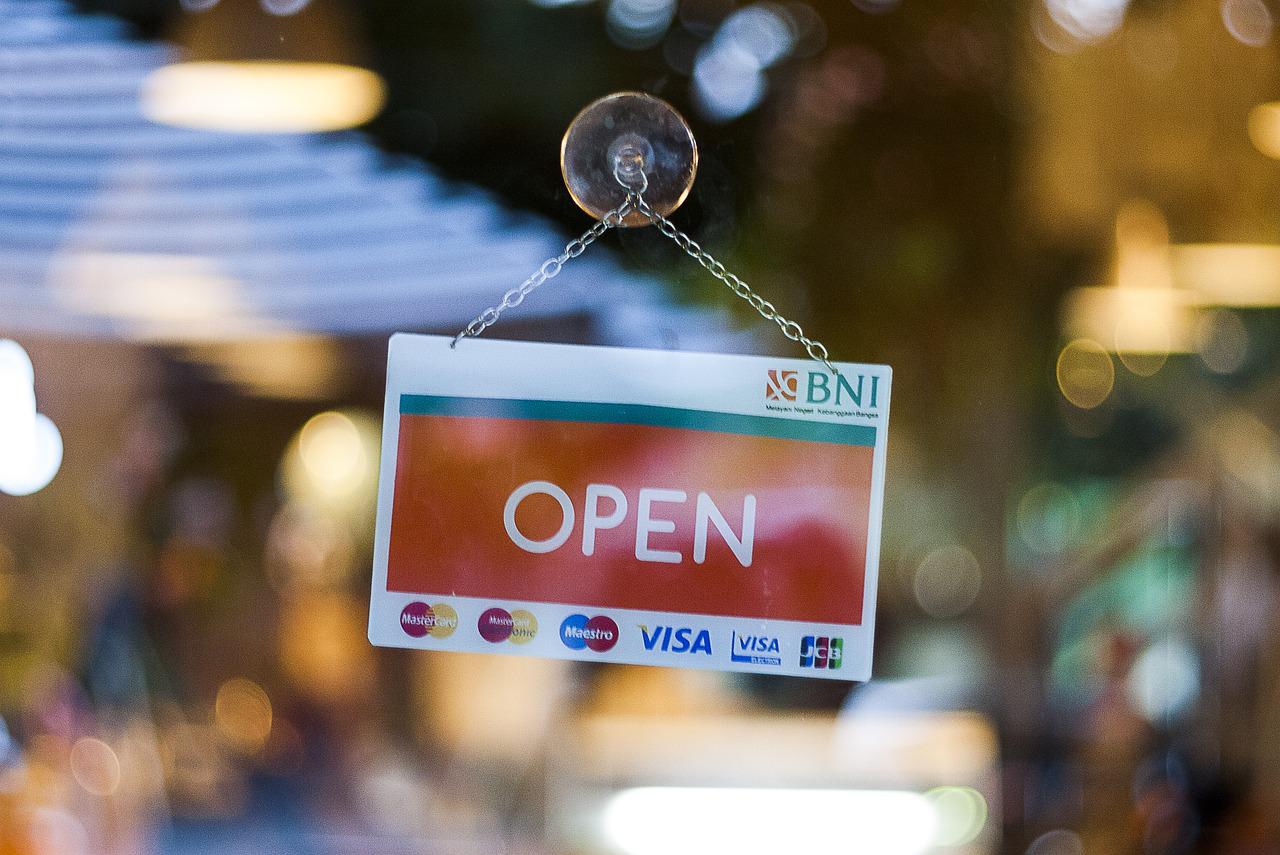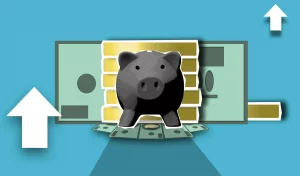The takeaway business sits right between brick and mortar restaurant businesses and cloud kitchens as the cornerstone of growth. Especially when we talk about the last two years’ stats, the British Takeaway Campaign report highlighted an increased demand in takeaway orders by up to 38%.
Many businesses had to throw in the towel early or struggle with maintaining break-even points. Restaurants weren’t the only ones to face this dilemma. However, those companies that quickly retaliated with ‘out of the box ideas and online presence made a quick recovery.
Particularly, takeaway food hubs’ orders soared because even though the lockdown restricted physical contact between a business and its customers, deliveries were actively made through online food ordering apps.
Likewise, delivery companies, such as UberEats, Deliveroo, and GrubHub also reported an increased number of clients considering opening small takeout restaurants.
This post brings different aspects of takeaway food businesses and the right way to open small takeout restaurants as you go by with your business plan.
So, let’s get started.
This is what we recommend.
Opening a Small Takeout Restaurant In 4 Easy Steps
-
Start With a Takeaway Food Business Plan
Over the last year, we have extensively talked about restaurant business plans. In that sense, a small takeout restaurant business plan isn’t any different.
In other words, if it is your first time creating a small-scale business plan, know that the documentation doesn’t have to be as detailed. Since you are not looking to hire too many employees, sub-level managers, and other people, the expenses need to be minimized to a certain level.
At the same time, your business plan for opening a small takeout restaurant should focus on short-term realistic targets. These targets will outline the basic infrastructure layout – i.e. if you don’t have one already. Then there is the predicted revenue streak for the first year. If you don’t foresee making any revenue or profit, the incoming money should be enough to sustain at the break-even point.
The most important part that comes at the implementation level of your small takeout business plan is the food company license. For U.K. business owners, a Level 2 Food Hygiene is needed to operate this type of business. For people in the Middle East, consultation with UAE trade organizations is required to elicit the exact number of licenses needed to open small takeout restaurants.
-
Choosing The ‘Right’ Food Services Platform
Food services platforms are there to stamp your small-scale takeout restaurant on different online food ordering apps. Once your name brand goes live, customers will start ordering food through the relevant app.
The problem is that there are a lot of variances in the market right now. We have multiple food services platforms operating underneath two unique umbrellas: The Aggregators and Direct Ordering Platforms.
-
Aggregator Platforms
Aggregator Platforms are 3rd party online food ordering platforms. Think of multi-national brand names, such as; GrubHub, UberEats, FoodPanda, Deliveroo, etc.
All of these companies operate at more or less the same level. However, the difference comes in the service fee, commission percentages incurred on individual customer orders coming to your small takeout restaurant business page, and extra charges. The latter comes in marketing expenses, should you be looking to promote your new takeout restaurant on the aggregator’s app.
Technically, two main roadblocks will ‘hit’ your business in the worst possible way.
-
Lack of Control On Your User Data
Aggregators do not share your customer information with you. It’s plain and simple as that. While you may continue to make a lot of money and profit on top of yearly revenue, you will never know about your customers’ contact detail. Who placed the order? Which customer ordered a specific food combo and stuff like that is something that will go unanswered.
The aggregator company’s policies shroud the data-driven metrics. That’s why aggregators are not a suitable choice to start with.
-
Exorbitant Commission Percentages
This is an alarming factor.
It is worth bearing in mind that all the aggregators have different commission percentage ceilings on incoming online orders against your restaurant. For instance, FoodPanda charges 35% – 44% on each order.
As a result, your cost of doing business is more than your ability to make a profit – let alone keep up with the break-even point.
Aggregators are best suited for food companies with a growing number of customers. If you are starting as a brand new small takeout restaurant business owner, it’d be ill-advised on our part to make such recommendations.
-
Direct Ordering Platforms
Direct ordering platforms are quick commerce enablement companies that give you full reign over your customer data, marketing stats, etc.
Blink is the most relevant example of a direct online ordering platform. Commissions are there, but they are drastically low compared to the current aggregator percentages.
Similarly, Blink offers full-scale control over how you choose to monetize your customer data. They have a dedicated Microsoft Power Bi panel to showcase customer sales behavior, potential menu combo deals to run on your food ordering app, and vice versa.
Blink also offers a branded online food ordering website and a dedicated application for iOS and Android users. Therefore, direct ordering platforms are a better choice due to the scalability potential and the level of support available to startup business models.
Later on, you can consider aggregators when you have opened multiple branches for the takeout food business because of the previous customer base.
-
Menu Engineering Like a Pro!
Regardless of whatever marketing tactics you choose, people will be ordering meals. Therefore, you need to offer them something to remember you by. It’s the visual quality and the taste of your food that will matter.
The problem is that despite high-quality visuals and delicious taste to offer, many small-scale takeout restaurants fail to promote their online food menu.
The reason is simple; you need to figure out how to engineer your food menu properly. Food menu engineering is all about figuring out which items sell high and which ones don’t. The next step is to pick on from each cluster and combine them as a combo deal to be promoted on your online food ordering app.
To think of it, restaurant food engineering is an entire playfield where many metrics come into play.
The sooner you start figuring out the key components of your online food menu, the better it will be from a long-term perspective.
-
Getting The Hang of Small Takeout Restaurant Marketing Basics
Paid marketing is always the better option with lucrative benefits to the advertiser.
However, ensure that all free and organic takeout restaurant marketing potential is tapped dry before you go there.
That means sending business cards to local businesses in your vicinity, printing out small takeout restaurant menu flyers, using social media to set up a profile for business promotion, and taking charge of cold sales calls.
In other words, even if you are looking at free and organic marketing campaigns, it is a full-stack module with tons of potential on the side. Paid campaigns are a better option, but they are not perfect for brand new food businesses with little or no social media and search engine presence.
On the last note, if you are already on board with a Direct Food Ordering platform like Blink, the website and mobile food ordering part will be covered. The company doesn’t charge anything to set up your platforms for online visibility.
If you are considering creating your platforms with total independence, don’t forget that the cost of platform development will be equally high.
Key Takeaway On Opening Small Takeout Restaurants In 2022
Here’s what you need to go over with a fine-tooth comb during the execution process of your soon-to-be-launched company.
- Develop a sound business plan for opening a small takeout restaurant.
- Brainstorming decisions to sign up with an aggregator or direct online ordering food service provider.
- Engineering and promoting your restaurant menu.
- Using free and organic marketing campaigns for basic business scalability purposes.
- Relying on data-driven metrics to improve your takeaway restaurant online & real-life operations.
Why Opening Small Takeaway Restaurants Is a Big Deal In 2022?
Besides the fact that the idea of homecooked food appeals more to customers than fast-food meals, takeaway restaurants don’t have a lot of baggage. The expenses are minimal; you can operate from a small facility, and the business requirements aren’t that much.
Also, to think that you won’t be required to hire many hands-on staff, managers, and employees, opening small takeout restaurants is a bargain worth the ‘hassle.’
Over the last three years, the overall number and cumulative revenue for online food orders increased phenomenally. In the U.K, the businesses’ combined worth is estimated at around £22 billion. Even though the COVID-19 created resonance in favor of small food companies, food lovers aren’t showing any sign of backing off. The trend’s been set, and the stakes are high as ever.
The excellent growth prospects for such small-scale food and beverage companies bode well.
That’s more reason to open small takeout restaurants as soon as possible.
The problem is that if you haven’t owned or launched a food business before, you should focus on opening a small takeout restaurant rather than “restaurants” at this point. Managing a food business is challenging, just like any other brand new company.
Conclusion
Although launching any new business is an exciting endeavor, it comes with its fair share of challenges.
Just remember that those businesses that have already persevered have gone through similar challenges in the past to reach a certain level of success. However, the right choices concerning the partnership with food services companies, suppliers, and marketing campaigns make the difference.
If you are still unsure of the direction, feel free to post questions in the comments section below. We look forward to hearing from you.
Good luck!
[INSERT_ELEMENTOR id=”10819″]
Related Articles:
 Expert Tips on Creating a Balanced Menu for Your Restaurant
Expert Tips on Creating a Balanced Menu for Your Restaurant
 The Ultimate Guide on Starting your Own Food Truck Business
The Ultimate Guide on Starting your Own Food Truck Business
 How to Calculate Food Cost Percentage (with REAL examples)
How to Calculate Food Cost Percentage (with REAL examples)
 20+ Restaurant Industry Statistics Restaurant Owners Need to Know
20+ Restaurant Industry Statistics Restaurant Owners Need to Know
 How to Increase Restaurant Sales: 4 Ultimate Strategies to Win More Customers
How to Increase Restaurant Sales: 4 Ultimate Strategies to Win More Customers







